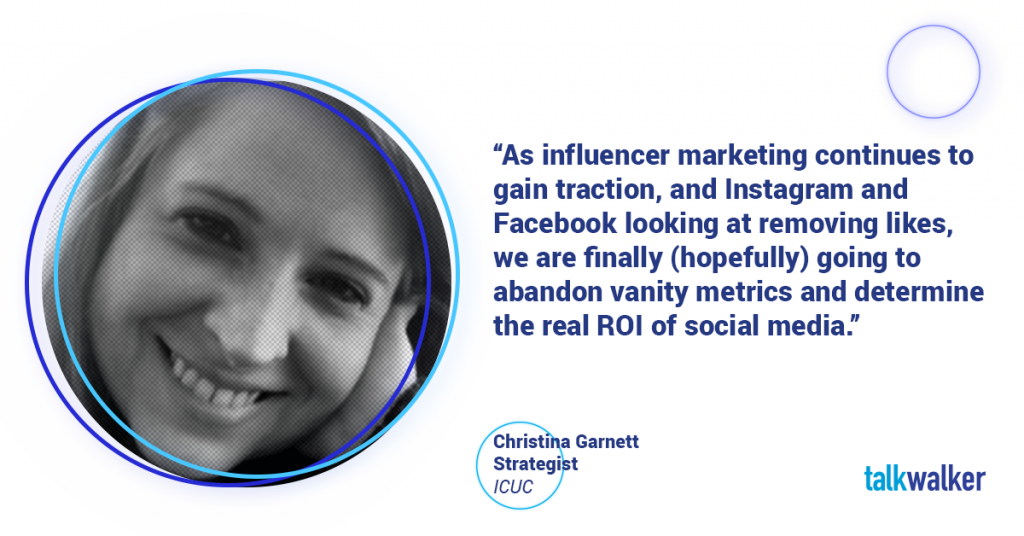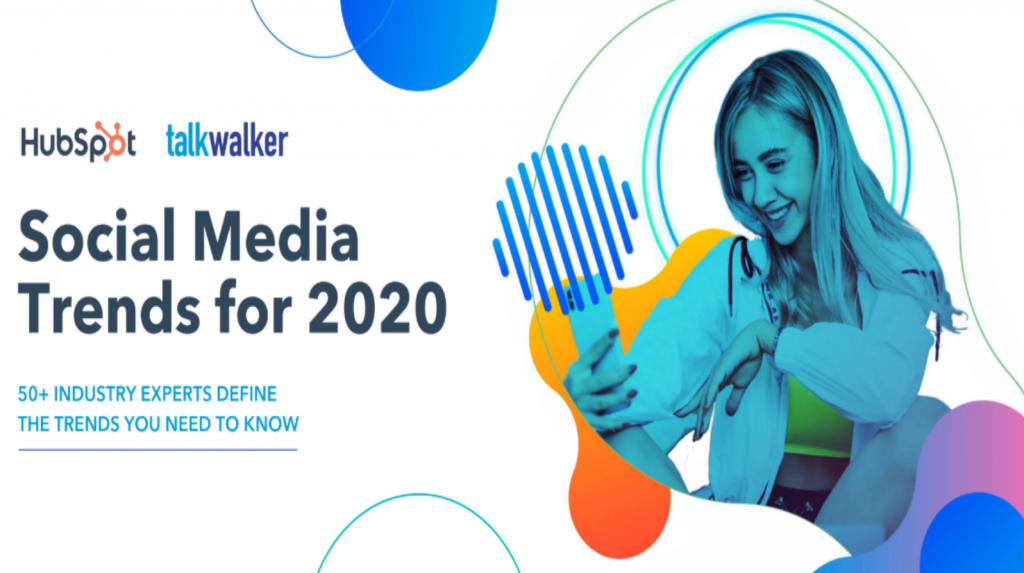7 INFLUENCER MARKETING TRENDS FOR 2020
A guest blog by Christina Garnett

One thing is for sure, 2020 is going to be a wild ride.
Influencer marketing continues to be a hot button issue for brands, agencies, and users alike.
As algorithms change, and new platforms such as Tik Tik emerge, how can today’s influencers thrive in 2020?
The answer is yes - they need to adapt.
More and more brands have determined that influencer marketing can be a valuable addition to their digital content strategy, but they still want to ensure that they see a return on investment.
For influencers to continue to maximize brand and agency deals, as well as increase their reach, they will need to prepare.
Accordingly, I have created a list of the top 7 influencer marketing trends of 2020.
Like Removals
Facebook is currently testing like removals in non-US countries around the world, and there is a consensus of the positives that could result.
Influencers should not see this as an obstacle to their success but rather an opportunity to adapt.
They are going to have to up their content and analytics game.
So how can they adapt and prepare for the effects of these removals?
(1) More influencers (macro and micro) will utilize media kits and provide reports to showcase their reach.
With Instagram and Facebook hiding likes in countries across the world, influencers will still be able to see those likes; they won’t be audience facing.
Influencers won’t be able to select as quickly based on their content’s success, so they will need to be able to showcase the value they can offer brands.
This will be seen with more and more influencers using media kits, reports that showcase engagement percentages, as well as their reach numbers and swipe ups for Stories.
(2) We are moving past vanity metrics.
As marketers, we realize that vanity metrics (your likes and follows) don’t tell the true story of your social media ROI.
They don’t hold any real ROI, and yet we have clients and higher-ups that point to those as the ultimate KPI.
With the removal of likes (being tested in select countries now) for the sake of mental health and a more enjoyable user experience, this may be the final push to get us to focus on metrics that truly matter.
Metrics like engagement rate, swipe ups, website conversions, and more will hopefully become the new measurements for success.
Vanity Metric Buying & Selling Is Now Illegal
Ever look at an account that has an insane amount of followers and very little engagement?
Well, there’s a pretty good reason for that.
There are checks and brand deals that have been established on the belief that those followers (and potential future brand customers) are real.
With the news that the practice of buying and selling followers and likes now illegal, influencers need to showcase that their value isn’t just as fake.
(3) With buying and selling of likes and followers now illegal, we will see more of a focus on earning trust between influencers and brands.
It’s easy to think that because an account has a massive follower and likes count, they may be able to create awareness and sales for your brand.
That isn’t necessarily true.
Fake followers are a significant concern for brands and Instagram as a whole.
If an influencer burns your brand because of how they present themselves on Instagram, it’s very easy to see why that brand would be angry at the influencer as well as the platform.
Brands want Instagram to do something about these fake numbers, especially before they invest any more money.
(4) Look for more tools to focus on influence and engagement numbers.
Tools like Spark Toro will let you look at not only real vs. fake followers on Twitter, but will also look at the quality of your followers.
Look out for tools like this for Instagram.
Proving the quality of followers as well as metrics that showcase conversions or Story swipe ups will take over as business decide which influencers they should work with.
(5) Influencers will start having to put money behind their content.
Most influencers and early adopters have been able to thrive with organic traffic as well as any paid followers/likes they have.
With Instagram continuing to remove bots, many are seeing a significant drop in reach.
For influencers who live by their Instagram numbers, how can they continue to grow and maintain significant reach for their brand partnerships?
They may resort to having to run ads for their accounts to guarantee they are continuing to gain followers and content reach.
Prove Your Worth With Trackable ROI
Like with other forms of marketing, it’s time to look at the KPIs. Influencer marketing isn’t a completely unknown entity anymore, and CMOs want to see results from their campaigns.
Reach isn’t enough anymore to keep a brand happy.
You need to prove you can make them money.
(6) Brands want value and ways to track it. With the lack of trust in follower counts, we will see new, trackable ways to determine influencer volume.
Be prepared for referral programs using UTMs as well as apps like Like To Know It, create an e-commerce marketplace that is directly attached to the influencers who are driving sales.
(7) For brands still trying to decide if influencer marketing can work for them, look for more to venture into using user-generated content (UGC).
For many customers who love a brand, being featured is usually a tremendous honor and will often agree to use their post for nothing or next to nothing.
This not only is this a way for brands to show that they see their most prominent supporters, but showcase their real customers.
Seeing real people use or love a product carries more weight and helps potential customers see themselves as a member of the target audience.
We see brands doing this with their UGC and influencer choices to showcase that real people use their products.
Brands like Lively do this so well.
The pictures are a mixture of well placed flat lays and women of all sizes celebrating their body and Lively’s products.
They look like people you could pass by as you cross the street.
They aren’t unattainable - They are us.
To see more brands crushing it in the UGC department (and for overall inspiration), check out Later’s list of top brands using this strategy.
2020 will mark a strategic moment for influencer marketing as we continue to determine the impact of social media.
The longevity of influencers is tied to their ROI, with the use of trackable campaigns and tools that showcase the authenticity of follower numbers.
It’s time to infuse transparency and more in-depth metrics into the scouting and reporting process.
Real results are what matter.
7 INFLUENCER MARKETING TRENDS FOR 2020

Meet Christina Garnett

A former teacher and marketing director, Christina Garnett works with Fortune 500 brands to strengthen their digital strategy.
She works to create brand bibles, strategy playbooks, and more in the pursuit of a clear branded message that resonates with the target audience.
She has a deep love for audience research and social listening, believing that to truly understand your audience, you need to listen to them.
THE TOP 50 SOCIAL MEDIA TRENDS FOR 2020 & BEYOND
























